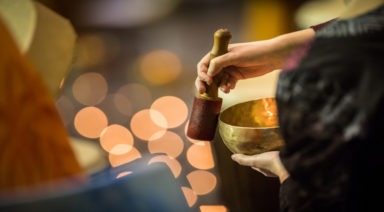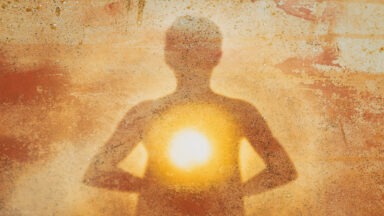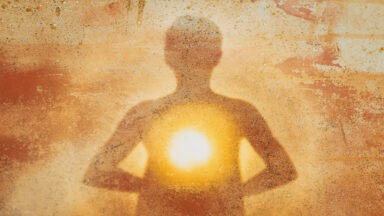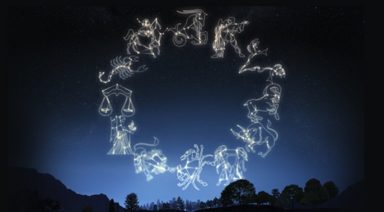What are the Health Secrets to the Hunza People’s Longevity?

In a mountainous region of Northern Pakistan, lies the Hunza Valley – an isolated area of the Himalayas, home to a community of people said to survive longer than anyone on Earth, living well over a century. So, what are the health secrets to the Hunza people’s longevity?
The Hunza Longevity
Those who have heard of the Hunza are likely familiar with the legendary rumors that this secluded people have a life expectancy of 120 years, with some living up to the age of 150. Meanwhile, the average life expectancy in Pakistan is only 67 years.
Whether the Hunza longevity is exaggerated is up for debate, but what is undoubtedly true is that their isolation and quality of life have some interesting characteristics that would certainly make one healthier. It is also highly likely that their average life expectancy is somewhere around 100 years old.
The Hunza are said to be able to bear children later than usual, never getting sick, and being impervious to cancer. While there may be validity to some of these claims, others might be taken with a grain of salt.
One website states that Hunza women can conceive between the ages of 60 and 90 – a claim most women would find incredibly hard to believe. Another common belief is that the Hunza are all descendants of Alexander the Great, who left men too weak to continue on treks through the mountains during the Greek’s conquests in the fourth century BCE.
While the former claim sounds exaggerated, there is a possibility that the Hunza could be descendants of an Indo-European race that settled in the area. We’ll come back to this later on.
The Hunza Health Secrets
The Hunza Valley is situated in a remote, pristine area of Northern Pakistan, where locals grow their own food and utilize fresh glacier water for drinking and bathing. Cut-off from any nearby cities or commercial hubs, the Hunza do not consume any processed foods and eat a diet rich in vegetables, milk, grains and fruit, especially apricots.
Apricots are a staple for the Hunza, who are said to go for several months a year on a diet consisting purely of apricot juice. The Hunza are said to not suffer from cancer, due to their consumption of vitamin b-17, also known as amygdalin, found in apricot seeds. Their diet also consists largely of raw fruits and vegetables, and lesser quantities of meat.
There are certain areas of the world, known as Blue Zones, with high concentrations of centenarians and longer life expectancies. Though the Hunza aren’t included on that list, they share some similar characteristics with Blue Zone denizens. Much like the Blue Zones, the Hunza live in an area of high elevation, where many work physically strenuous jobs, keeping them in peak physical shape, while breathing clean, fresh air.

The Hunza are known to practice yoga, including yogic breathing techniques and meditation. They are also said to be aware of the importance of relaxation and energy management, resting when they need to and consciously mitigating anything that may cause emotional stress.
Legends of the Hunza Valley People
Do the Hunza really live to 150 years old? It’s hard to say, though one anthropologist said he thinks this concept likely comes from their conception of age. The Hunza incorporate perceived wisdom into one’s age in addition to the actual number of years they’ve been on the planet – one explanation for their alleged longevity.
But there’s another interesting story that may have something to do with their rumored vivacity found in the popular 1930s film, Lost Horizon. The Frank Capra classic, based on a novel by James Hilton, introduced us to Shangri-La, a paradise in which aging and illness are suspended. In the movie, an English convoy from China crashes in the Himalayas, stranding the passengers in blizzard conditions.
The crew is discovered by locals and brought to a tranquil valley where they find refuge from the storm. The citizens of this magical place are said to be hundreds of years old, free of sickness and in perfect health. A terminally-ill member of the convoy starts regaining her strength, while everyone’s age seems suspended in time. When any of the characters leave Shangri-La, they return to their true age.
Many believe Capra used the Hunza Valley as the basis for his conception of Shangri-La, sparking the legends of longevity that subsequently surrounded the Hunza Valley.

But there are also some unresolved mysteries involving the Hunza, like the origin of their language. The Hunza language, known as Burushaski, is completely unrelated to the Indo-European or Tibetan languages bordering it. The only similarity anthropologists have connected it with is with an equally isolated and unique culture – that of the Basque region of Spain.
Interestingly, indigenous people of the Basque remained isolated from surrounding cultures for centuries, preserving a language and cultural aspects that long faded in neighboring states. The Basque language and Burushaki share as many as 70 different cognates, leading anthropologists to believe the two cultures may share a common ancestry through a Proto-Caucasian tribe.
The Hunza have the fairest skin out of any other group in Pakistan, adding to the assumption they may have descended from a small group that settled in the region at one point, possibly soldiers from Alexander the Great’s army, or another nomadic European group.
While the Hunza are likely to have slightly longer life expectancies, it seems their lifestyle is, in fact, healthier than average, both physically and mentally. But since they doesn’t keep track of their age with birth certificates, it’s hard to determine their true life expectancy.
When listening to accounts from anthropologists and researchers who have visited the Hunza, it’s evident that the modern stresses we face are completely unheard of there. The Hunza enjoy the lifestyle and physical labor that makes up their simple existence, and may provide us with some clues on the benefits of living a simpler life of our own.
Hunza Shamanism
The Hunza also have a unique shamanic history involving a story of mythological beings known as the Pari. These fairy-like creatures are said to make their presence known only to a shaman, the Bitan, who is able to contact them during periodic ceremonies.
The Pari are said to live in the mountains surrounding the Hunza Valley, protecting locals from outside threats. Shepherds say when they are herding goats at higher altitudes, they can hear the voices and inhuman music of the Pari. But their descriptions of these beings are different than the Western conception of fairies.

“They were human-like, but taller than any man I know, with fair skin, red cheeks, golden hair, and clad in green garments,” a Hunza native said. “Their mouths were wider than human mouths, their noses extended high into their foreheads, and their feet were backwards.”
When contacting the Pari, the Bitan will inhale smoke from burning juniper, dance to the beat of a drum, and drink the blood from the severed head of a freshly killed goat. He then goes into an ecstatic trance state, communicating with these ethereal, otherworldly creatures. After his trance he provides the community with advice and a foretelling of future events.
Could the Pari’s protection and prophecies have anything to do with the Hunza’s longevity? Maybe not, but it provides another example of how these people continue to uphold ceremonies promoting their culture and group gatherings. Maintaining social rituals and cultural narratives is good for both mental and emotional health, contributing yet another factor to an overall healthy lifestyle. Though, maybe its ok to pass on the goat blood when implementing Hunza health secrets into your life.
Telomerase May Be The Secret to Anti-Aging

Dr. Bruce Lipton invites us to consider this: “contained within our bodies is what so many have studied, sought after, and dreamed about—the fountain of youth.”
What he’s talking about are telomeres; sections of DNA found at the end of each chromosome that can offer us insight into how we can “create a long-lived biology,” filled with wellness and meaning.
Telomeres And The Genetics of Aging
The science of genetics was formed in large part because of the human need to grapple with a limited lifespan. Central to this discussion is the role telomeres play in understanding the genetic coding of our aging. Telomeres have two essential functions:
- To allow DNA to be replicated without losing genetic information
- To prevent the double helix of DNA from unraveling
The process of DNA replication involves a shortening of our chromosomes from their original version, reducing the length of the original DNA molecule. This process invariably leads to aging, depression, and disease.
The role of the telomere is to extend that replication time by adding a piece of DNA at the end of the strand that doesn’t code for anything and acts as a mechanism to prevent the degradation, or unwinding, of the double helix structure.
Lipton uses the analogy of shoelaces to bring the concept of telomeres to life. At the end of shoelaces are little plastic caps known as “aglets,” which make the process of lacing shoes simple and fluid, while holding the strands of the shoelace material together. And the same concept can be applied to the telomeres at the ends of our chromosomes.
While the role telomeres play in retaining the integrity of a DNA strand is important, Lipton stresses they have an even more important function—telomeres form an extension of the DNA that allows for replication without affecting the gene programs, allowing for an extended amount of divisions before running out; the implication of this on our longevity is profound.
For many years, it was believed the lifespan of an organism was directly proportional to how many times a cell can divide before losing the telomere extensions and cutting into the DNA program.
Leonard Hayflick, a scientist in the 1960s calculated that a human could live approximately 90 years before telomeres were lost. However, in 1984, research scientist Elizabeth Blackburn made a truly life-changing and life-extending revelation with the discovery of the enzyme telomerase, which extends telomere length. Her discovery made an exciting impact on our understanding of the human lifespan.
But as interesting as Dr. Blackburn’s discovery was, the enzyme’s ability to be activated or inhibited is dependent upon a number of external factors. The inhibition of telomerase can be caused by improper nutrition, childhood abuse and neglect, domestic violence, post-traumatic stress disorder (PTSD), as well as a lack of self-love, love from others, and life purpose—factors that can all have a negative impact on our lifespan.




































